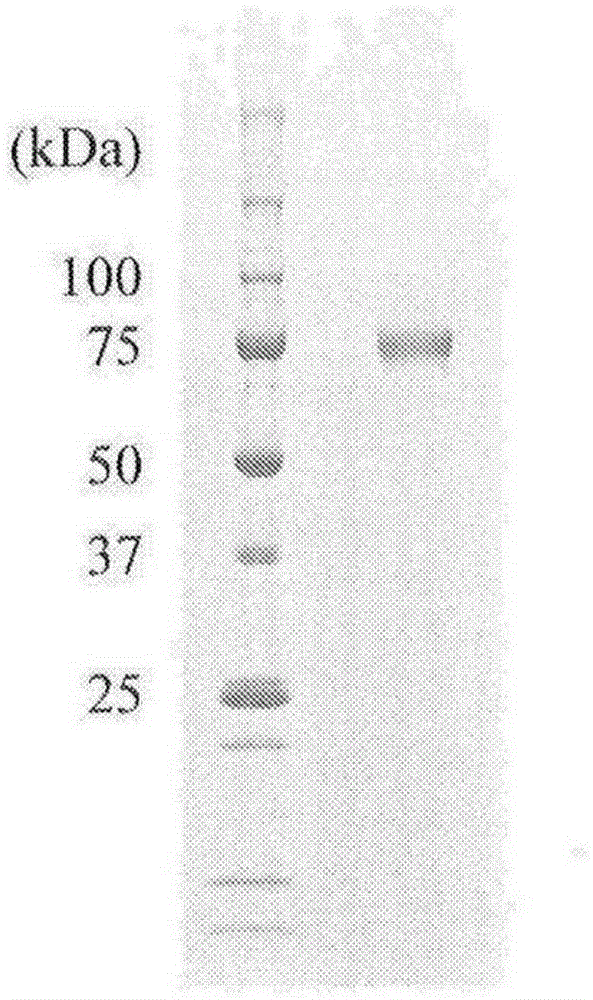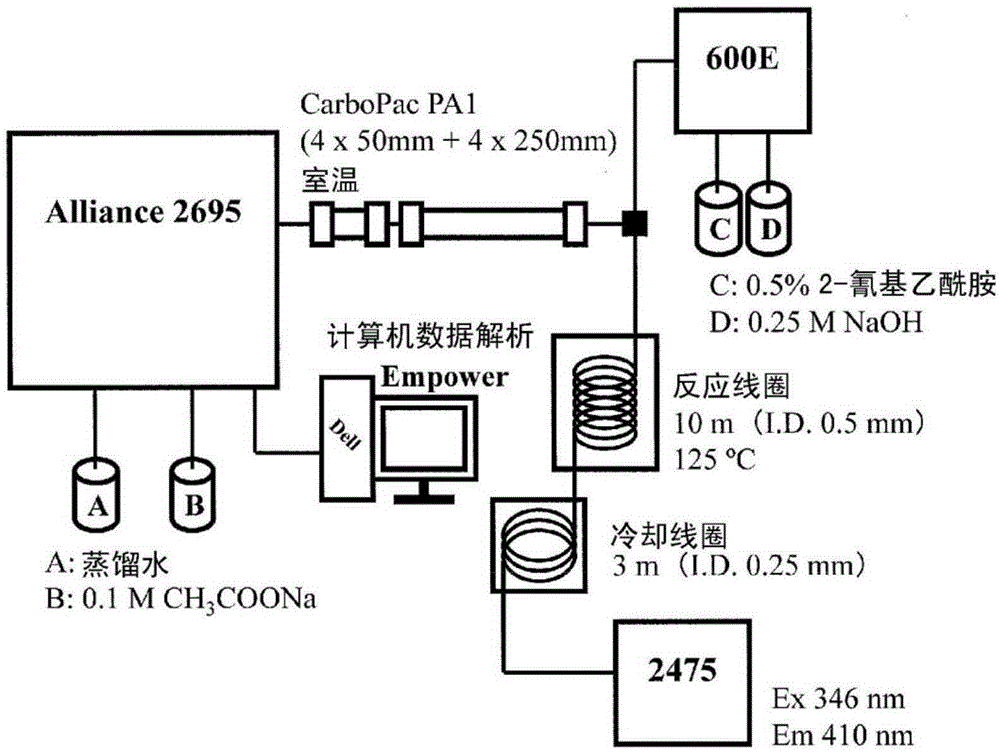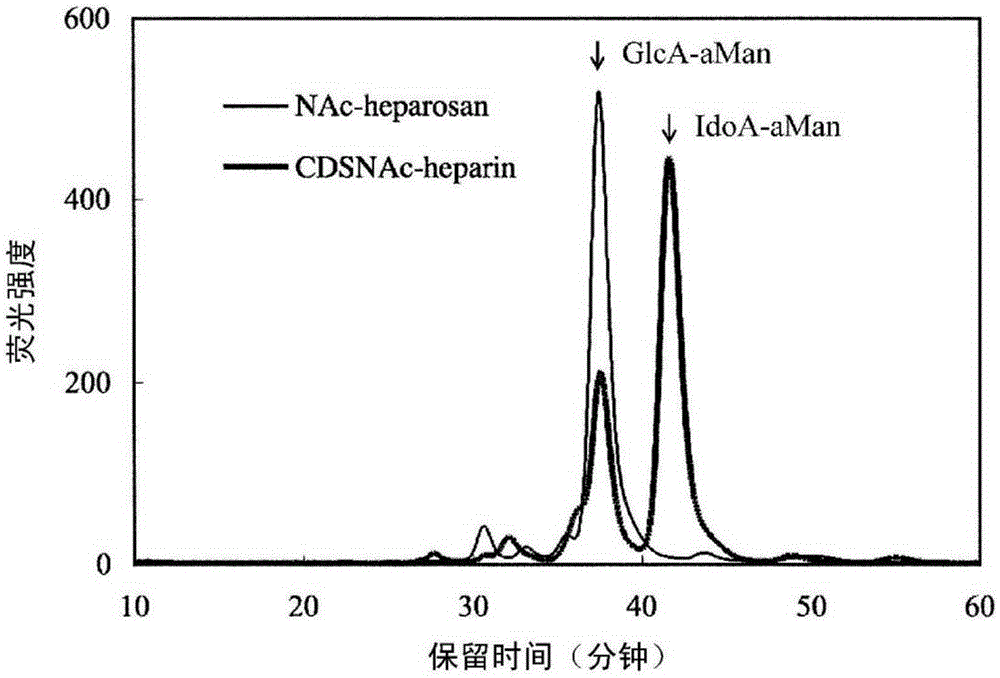Heparosan-glucuronic acid-5-epimerase, and method for producing polysaccharide using same
A technology of glucuronic acid and heparin precursor is applied in the field of bacterial heparin precursor-glucuronic acid-5-epimerase, which can solve the problems of unclear and undiscovered products.
- Summary
- Abstract
- Description
- Claims
- Application Information
AI Technical Summary
Problems solved by technology
Method used
Image
Examples
Embodiment 1
[0229] is derived from the fractionation of the mRNA of the African large snail mucus gland
[0230] The mRNA of the African giant snail was extracted from the mucus gland by the thermal phenol method (for example, VerwoerdTC, DekkerBM, HoekemaA., NucleicAcidsRes. 1989Mar25; 17(6): 2362.), and then used for the purification method using magnetic beads and mRNA Obtained by fractionation. The steps are shown below.
[0231] A large African snail was cut open with a cutter, the excised mucus gland was washed with distilled water, and then sealed in a 1.5 mL screw-cap test tube. Immerse the test tube in liquid nitrogen for 1 minute to freeze, then use a homogenizer to crush the mucus glands, add 0.5 mL of hotextraction buffer heated to 80°C in a water bath (heat to dissolve phenol and buffer in a water bath at 55°C) solution (0.1M LiCl, 100mM Tris-HCl (pH = 8.0), 10mM EDTA, 1% SDS) was added in a 1:1 and stirred solution), and stirred for 30 seconds using a test tube mixer. Th...
Embodiment 2
[0234] Preparation of the African giant snail cDNA phage library
[0235] cDNA was obtained from the mRNA obtained in the above by using AccuScript Hi-FicDNA Synthesis Kit (manufactured by Agilent Technologies) according to the protocol attached hereto. That is, using the mRNA obtained in the above as a template, a reverse transcription reaction was performed using an XhoI site-added oligo dT primer (SEQ ID NO: 6), 5-methyl dCTP, and Moloneymurineleukemiavirus reversetranscriptase (MMLV-RT) . Next, a nick translation reaction using DNApolymeraseI was performed in the presence of RNaseH to obtain double-stranded cDNA.
[0236] The PfuDNA Polymerase attached to the kit was applied to the double-stranded cDNA to blunt both ends of the cDNA, and then the EcoRI linker (described later) was prepared according to the protocol attached using DNALigationKitVer.2.1 (manufactured by TakaraBIO). ) to ligate the double-stranded cDNA. Next, restricted digestion was performed using the...
Embodiment 3
[0239] Acquisition of a DNA fragment encoding a polypeptide of HG-5epi
[0240] Escherichia coli XL-1BlueMRF' strain (manufactured by Agilent Technologies) was used as a host cell (host bacterium) for infecting the cDNA phage library obtained in the above , and the phage was amplified according to the plate lysis method described in detail below. Increment and recycling.
[0241] Plant the host bacteria in 20 mL of LB medium (containing 0.2% maltose, 10 mM MgSO 4 ) and cultured overnight at 37° C. with shaking to obtain a culture solution with an absorbance of about 1.5 at a measuring wavelength of 600 nm. The solution of the phage library obtained in the above was dispensed into three 50 mL test tubes at 30 μL portions, and 5 mL of the culture solution of the host bacteria was added to each test tube and mixed. Thereafter, the phage particles were left to stand in a water bath at 37° C. for 15 minutes to infect the host bacteria.
[0242] In order to cultivate the host b...
PUM
 Login to View More
Login to View More Abstract
Description
Claims
Application Information
 Login to View More
Login to View More - R&D
- Intellectual Property
- Life Sciences
- Materials
- Tech Scout
- Unparalleled Data Quality
- Higher Quality Content
- 60% Fewer Hallucinations
Browse by: Latest US Patents, China's latest patents, Technical Efficacy Thesaurus, Application Domain, Technology Topic, Popular Technical Reports.
© 2025 PatSnap. All rights reserved.Legal|Privacy policy|Modern Slavery Act Transparency Statement|Sitemap|About US| Contact US: help@patsnap.com



